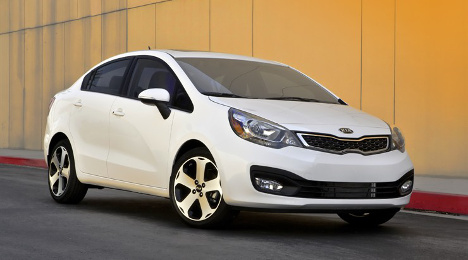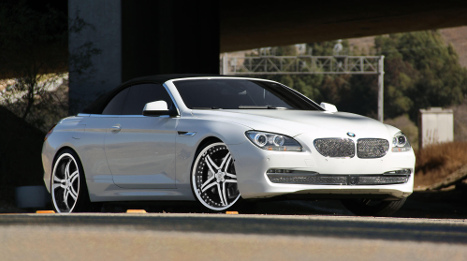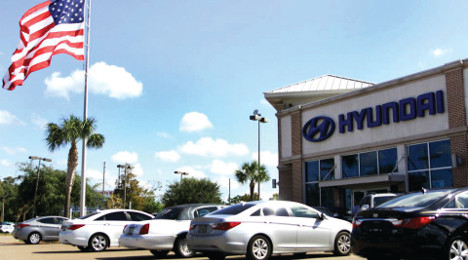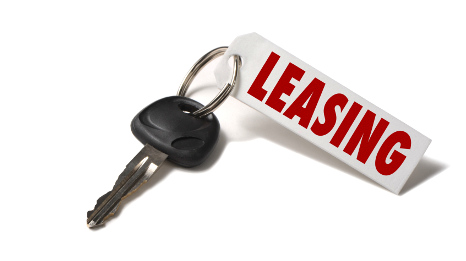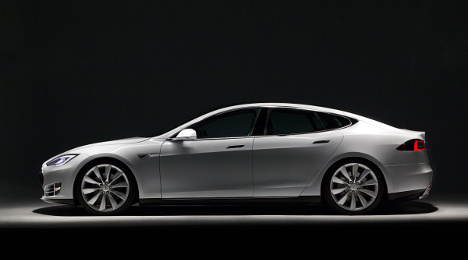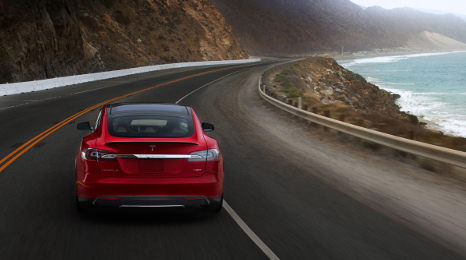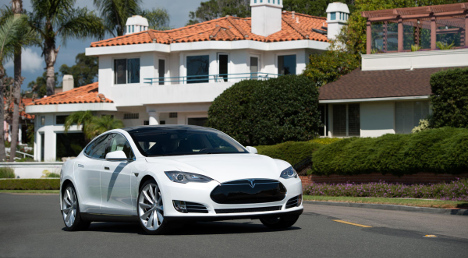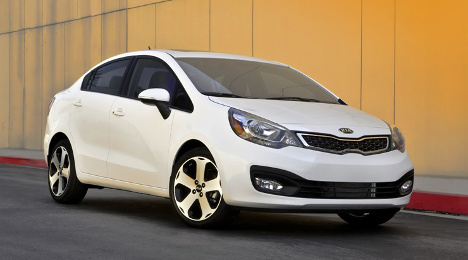Off-lease vehicles have come streaming in recently after dealers put up with tight used supply for years after the recession.
But some automakers are selling so many certified pre-owned vehicles — evident through this year’s overall soaring CPO sales — that sourcing still remains a challenge.
Take Kia Motors America, for example.
“While the statement of increased off-lease volume is correct, because of our skyrocketing CPO sales growth over the last two years (72 percent in 2013 and another 43 percent year-to-date, as of early October, for 2014) we are in a supply-and-demand position that makes inventory mining a bit of a challenge for our dealer base,” said Maria Williams, CPO retail support manager at Kia Motors America.
Though expanding supply should allow dealers to be a bit choosier when filling their CPO lots, for now, many are certifying every unit that is up to par.
“Kia dealers are still having a bit of an uphill battle attaining the inventory they need, and the majority of the successful ones are not being picky and are certifying every Kia vehicle that is eligible to be CPO,” Williams said.
Williams expects the automaker’s off-lease vehicle supply to increase significantly in 2015, growth she says will assist in Kia’s continued CPO volume sales expansion.
For now, though: “while dealers still have preferences in regards to what their best CPO vehicles are (older than 2014 with about 25,000 miles on them), they are not turning any contenders down,” Williams said.
When looking for the best sourcing methods in this challenging environment, Kia dealers try first to focus on their own customers.
“Trade-ins from a dealer’s own customer base are always the most beneficial way to go. There is no competition for purchasing the vehicle, like there is at auctions; if the customer did the maintenance with the dealer he knows that the vehicle is of great quality so less reconditioning for the dealer to do and therefore reduced cost and more of an opportunity to make a greater net profit and no transportation costs since the vehicle is on his lot already — yet another reduction in cost and increase in the net profit,” Williams explained.
Kia also suggest the following sources to its dealers in regards to CPO inventory mining:
- Service drive
- Data mining from the dealer’s DMS
- Auction
- Local rental agencies
- Craigslist
- Third-party sites
- Newspaper
Editor's Note: This story is featured in the Oct. 15-31 print and digital editions of Auto Remarketing, which is our annual CPO Dealer of the Year issue that includes a special look into CPO trends and best practices
In a business as relatively new as the certified pre-owned market, the tides are still turning, and nothing seems to stay the same for long.
Just a couple of years ago, off-lease vehicles had dried up, and it was no easy task to fill a CPO lot; now, off-lease supply is flowing in droves, and dealers are able to be a bit pickier about which vehicles they certify.
Similarly, the consumer environment is changing, as well. Go back five years, and many consumers had no idea what CPO even stood for, let alone the value it provided. Now, many shoppers know just as much as a dealership’s salespeople do about automaker CPO programs.
Of course, as the tides shift, so do CPO strategies. That’s why Auto Remarketing reached out to Kevin Rustad, national pre-owned sales manager for BMW, to get his take on today’s certified market.
AR: Do you find that shoppers are better informed of the value of CPO vehicles nowadays as certified vehicles become more popular?
Kevin Rustad: Yes, consumers seem more educated about CPO vehicles than in the past. Most customers seem to know that “CPO” means that the car is somehow “better” than a non-certified car, but there’s still a lot of education needed in terms of exactly what our certification process is and the overall value of certification to our customers.
AR: How do you best convey the value of your certified vehicles to potential customers?
KR: We have a layered approach. We instill the core values of our certified program into all forms of our marketing because there are consumers who may not know all of the benefits of buying a certified pre-owned BMW.
AR: What are some of the best outlets you have found for CPO advertising? Where are the best places to reach CPO customers?
KR: Digital has been a very successful outlet for us. Since we know almost all of our customers start their search online, we know we need to have a strong digital presence.
AR: Once a customer is on the lot, what kind of in-dealership advertising promotes the certified program best, and why?
KR: We have point-of-sale merchandising on our vehicles as well as brochures and digital displays inside our showrooms. Again, it’s important to have a strong certified message throughout the sales process as a constant reminder of the program, the benefits and the value.
AR: Off-lease vehicles have come streaming in this year after dealers put up with tight used supply for years after the recession. How has this impacted sourcing and stocking strategies? Has incoming supply allowed dealers to be choosier about which vehicles they certify?
KR: Our average maturities over the last five years have been relatively stable. Therefore, we have not had a tremendous influx or change in sourcing strategy for this year.
AR: What sourcing methods are proving to be the most beneficial for the CPO program this year, and why?
KR: Trade-is, closed sales, etc. Off-lease and loan turn-ins remain the strongest source of used vehicles for our centers. The dealers know these vehicles, they have seen them before because they have serviced them over the course of the ownership cycle. Our centers use auctions and other sources to supplement their inventory, as opposed to using them as a primary method.
Editor's Note: This story is featured in the Oct. 15-31 print and digital editions of Auto Remarketing, which is our annual CPO Dealer of the Year issue that includes a special look into CPO trends and best practices
When asked how Hyundai of New Port Richey has managed to lead the pack for certified pre-owned sales, store owner Scott Fink boils it down to two key factors.
First, he said, the dealership’s strong new-car sales enables it to take in more trades. And Fink said the store targets late-model Hyundai vehicles.
“We’re forever churning out on the service drive, seizing opportunities to take people out of cars — maybe if they’re in three-year leases, we’re taking them out in a year-and-a-half,” said Fink, president and chief executive officer of Hyundai of New Port Richey — Auto Remarketing’s 2014 CPO Dealer of the Year, presented by NCM Associates.
“So, we have an enormous number of very desirable, very sellable couple-of-year-old Hyundais,” he added.
The second factor driving this success, Fink says, is the fact that the dealership has a stand-alone Hyundai CPO sales center. The facility is located about half-a-mile from the main dealership center and had been a large Lincoln-Mercury dealership years ago.
Now, Fink and his team use the stand-alone center to sell certified pre-owned vehicles and other used cars, while also housing 27 service bays. Hyundai of New Port Richey still stocks some certified vehicles at its main location, but the store refers most CPO customers to the stand-alone store.
“I think being able to expand on our brand in the market, with that location, has been key,” Fink said.
Having an off-site certified pre-owned sales center certainly has its benefits and challenges — and Fink elaborated more on those.
“For me, the big advantage of having the separate lot was that I just not did have the physical plant here to even get in the game,” he said. “If you would look back at our sales in CPO, let’s say, over the last five or eight years, there were months that we didn’t sell any used cars or we would trip on two cars, because we had to wholesale the cars so quickly because we have no physical capacity here.
“So, the off-site location enabled us to get rid of the cars on the main location and put them up the street, and now we could actively market them to the consumer. That was a very, very big deal,” Fink continued.
The challenge, he said, is that senior management cannot be on the premises 100 percent of the time.
“Do we wish it could be on the same campus; that our top senior management can more actively control and manage the business? We would like that,” Fink said. “We think our team there does a great job. Could we be even better? The answer is yes.”
Sales Roll In; The Challenge is to Keep Pace
Last year, the dealership sold 1,357 certified pre-owned vehicles, which was the most for any Hyundai dealership in the nation. It was also more than 500 units stronger than any other Hyundai store.
Through three quarters, Hyundai of New Port Richey has moved 1,169 CPO vehicles, which the automaker said is a 19.2-percent year-over-year increase.
Hyundai’s CPO leadership also said the store is the automaker’s top-ranked CPO seller through three quarters of the year by nearly 500 units. It is expected that Hyundai of New Port Richey will yet again finish the year atop Hyundai’s CPO sales chart.
Comparing the two years, Fink said the dealership had a soft start to 2013, but finished the year strong. This year, the beginning was strong and sales had been static year-over-year from June through September.
Fink said year-to-date sales through September are up from where they were in 2013, but acknowledged that keeping pace with the last few months of 2013 is a big challenge.
“And I think a lot of that is the fact that even at my other store, CPO sales have doubled,” he said. “More and more dealers are in the game, which is good. We like to think we were somewhat of pioneers, and we’ve helped Hyundai and maybe even other brands recognize that you can be a successful new-car dealer and a CPO dealer without hurting your new-car business.”
Challenges for CPO Dealers
Fink said his store has been fortunate when it comes to inventory, but emphasized that the average CPO dealer is still experiencing challenges when it comes to generating the sellable inventory.
“You’re out on your service drive, you’re trying to buy customers out of deals. You might be giving away that new car to buy that transaction so you have that sellable used car,” he said.
Competition is also fierce these days — and it’s not just within the Hyundai network. Every brand, he said, “is in on the game.”
Additionally, the pricing model on the Internet poses challenges for dealers in the CPO market.
“That’s where our traffic and our business is coming from,” Fink said. “And being able to have processes and people in place in your organization to actively manage that to ensure that you’re getting the right look.”
Hyundai’s Success in CPO Market
Hyundai has realized some rapid growth in certified pre-owned sales, having moved 71,253 CPO units through nine months of 2014. That’s a 24.2-percent improvement; comparatively, the industry as a whole is up 9.9 percent as it heads towards another best-ever year.
What’s more, the company just recorded its best September for CPO sales. This immediately followed what was Hyundai strongest single month ever for CPO (August or otherwise).
“I feel the biggest issue is dealer focus. I think the company has done a good job of keeping it in front of dealers, reminding them of the profit opportunity,” Fink said of Hyundai. “I also think that not only myself, but Jim Ellis up in Georgia and some key dealers from around the country who are in on the game, I think they showed other dealers that, ‘Hey you know what? Here are some of the bigger dealers in the nation that are drinking out of both faucets, and you’re missing a huge profit opportunity.’
“So, I’ll give credit to the manufacturer for getting it in front of dealers, and I’ll give credit to the dealers for recognizing that, ‘Hey, this is a good opportunity. I’m going to get on it,’” he added.
And in less than three weeks, Hyundai of New Port Richey will be honored for its certified pre-owned accomplishments at Used Car Week.
Troy Morgan, who is the service manager of the dealership’s stand-alone CPO sales center, will accept the award on site during a CPO Forum general session that begins at 4 p.m. PST on Nov. 10.
He will be joined by Jose Froelich, who is Hyundai’s senior manager of certified pre-owned, and Paul Stowe, director of retail operations for NCM Associates.
Then at 10:30 a.m. PST on Nov. 11, Morgan will join a panel discussion on the “Top 10 Things You Can Do Now to Improve Your Store and Create a CPO Sales Champion.”
Also on that panel are:
- Will Amiri, Longo Toyota
- Rod Rowley, Larry H. Miller Group
- Kraig Quisenberry, DCH/Lithia Motors
- Moderator: Kathi Kruse of Kruse Control Inc.
Editor’s Note: In addition to Hyundai of New Port Richey and the Hyundai of New Port Richey Certified Used Car Center, Fink’s dealerships also include Hyundai of Wesley Chapel, Mazda of Wesley Chapel and Chevrolet of Wesley Chapel.
Certified pre-owned sales continue to soar, recently scoring the best quarter ever for the certified market.
And this growth in popularity cuts down on the challenges for dealers when it comes to conveying the value of the certified vehicle to customers.
When CPO vehicles first hit the lot, dealers had quite a job convincing potential buyers these vehicles were worth the slightly higher price tags; now, the new generation of CPO buyers have already done the research themselves and are well aware of the benefits of buying certified.
Maria Williams, CPO retail support manager at Kia Motors America, went a step further.
“We have found that customers are at times more knowledgeable than some in the business in regards to the benefits of CPO,” she said, adding, “Consumers are becoming more and more savvy on all aspects of the automobile industry and CPO is no exception.”
Before potential customers even make it onto the lots, Williams said they are already made aware of the benefits of Kia’s program by Tier 3 advertising that KMA offers for its website www.kia-cpo.com, and third-party sites such as AutoTrader.com, Cars.com, Edmunds.com, CertifiedCars.com and Carfax.com.
“We also have posts on KMA’s Facebook page and send messages via Twitter directly from KMA on the same topic,” she added.
On top of using the company’s own website as well as third-party sites, Williams says social media serves as one of the best outlets to reach today’s potential certified shopper.
“Social media and digital are the best avenues that we have found, as today’s consumer spends an average of 18 hours researching a vehicle purchase before making a decision, and 11 of those are spent online,” Williams said.
So, today’s CPO shopper will most likely know the certified program front and back before they make it onto the lot; but what about customers that aren’t sure whether to buy used or CPO?
Williams says they focus on in-dealership advertising to promote the program to these shoppers.
“We provide our dealers a myriad of point of sale materials that promote CPO by dressing CPO vehicles with the same, as well as the dealership itself,” Williams said.
Some of the on-the-lot advertising techniques include 6-foot-tall wind feathers, or flags, that are utilized to bookend the CPO vehicles on the lot, as well as 4-foot-long decals that adhere to the top part of the windshield — all serving to help the certified vehicles stand out from the store’s new and used inventory.
“We have found that by segregating CPO from new and used as the third viable option for consumers, we are right in line with what the industry is doing, (primarily in the luxury makes), in their advertising and therefor fortifying the consumers’ opinion of CPO as just as good as new but at a lower price point,” said Williams.
Editor's Note: This story is featured in the Oct. 15-31 print and digital editions of Auto Remarketing, which is our annual CPO Dealer of the Year issue that includes a special look into CPO trends and best practices.
In a recent discussion with Auto Remarketing, Scot Hall of Swapalease.com explained why he believes used-vehicle leasing makes sense, if the deals are put together carefully, particularly when it comes to certified pre-owned vehicles.
To get a sense of how much CPO leasing currently exists — and all the opportunity and challenges that come with this market segment — we reached out to the leadership of certified programs across the spectrum.
Based on the responses we received from CPO leaders, certified leasing is available in small doses. And it’s believed to have its fair share of risk and potential.
BMW, for instance, has leases available on certified vehicles, said national pre-owned sales manager Kevin Rustad.
But, he noted, “It is not supported, therefore, less than 1 percent of our CPOs are leased.”
As far as what potential certified leasing has to grow within the overall industry, Rustad says it really depends on how much OEM support is given.
He explained that “true residuals and money factors do not make leasing an attractive proposition relative to other forms of financing or new-car leasing because there is not enough of a payment differential to make it attractive to customers.”
Rustad added: “Leasing options would obviously bring payments lower and put a higher level of vehicle within the price range of more consumers. Most of the risks are on the manufacturer’s side, however, as residual losses on used cars could be higher, and thus, cost the manufacturer more in the long run.
“Additionally, OEMs are not making money on the sale of a used vehicle, like they do on a new vehicle; therefore, they have little incentive to support them beyond what the market says they are worth and what the true costs associated with the lease are,” he continued.
However, BMW’s Select alternative finance program gives consumers a lower monthly payments during the contract’s term before they pay a final/balloon payment, Rustad explained.
And that is one area where growth may occur.
“We think there is a lot of potential in this form of financing,” he said.
Meanwhile, Kia does not offer leasing on certified vehicles, said CPO retail support manager Maria Williams, who described CPO leasing as somewhat of a mixed bag of risk and reward.
“I think it would be a great idea, as long as you have the right customer that can get approved for leasing. That’s the only problem that I see,” Williams explained.
One of the benefits that comes from certified pre-owned, in general, she said, is the fact that the customer is getting many of the same or similar perks as he or she would on a new car — like a warranty — but at a lower price point.
“The challenges (for CPO leasing) come from the same point,” she said. “Some of the customers are looking for a lower price point because their credit can’t carry the higher price-point. And in order to lease, you have to have a better credit score than if you’re just going to buy — at least the majority of the time, depending on what programs the OEMs have.”
Toyota’s Tom DeLuise said his company hopes to do more certified leasing in the next year, but he also acknowledged the tough work it may entail. Toyota currently leases about 2 percent of its CPO vehicles, he said.
“There are circumstances when leasing will work, but with new-car incentives being as competitive in the market with all manufacturers, it is often difficult,” DeLuise said. “Toyota is looking at increasing our certified leasing business over the next year. It takes focus on the part of the dealer and the right training and support from our side.
“Just like new-car leasing, (for) the dealers that incorporate leasing into their process as an option for the customer, it can be successful,” he continued.
Specifically, DeLuise said, leasing can be a “great dealer retention tool” to keep customers coming back on a two- or three-year cycle.
Over at Jaguar Land Rover North America — which does not offer CPO leasing — national remarketing manager David Wolfe also shared his take on the benefits and challenges he sees in this particular slice of the market.
To start, just look at what leasing has done for new-car sales. Essentially, it allows you to be more aggressive with incentives and drive down to the price point with which the consumer is comfortable, Wolfe said.
Then again, there are risks, namely with setting residuals, Wolfe said. In setting the residual value on a lease of a CPO vehicle, you’re essentially gauging what that car’s value is going to be six or seven years into its lifecycle — no doubt a tricky proposition.
Another national CPO manager called the opportunity of leasing used or certified cars an interesting one, but suggested the upside potential is not great, citing the “significant risk” to lenders’ portfolios and the relatively low financing rates that customers already have available to them via conventional means.
Editor's Note: This story is featured in the Oct. 15-31 print and digital editions of Auto Remarketing, which is our annual CPO Dealer of the Year issue that includes a special look into CPO trends and best practices.
When Tesla confirmed rumors of a new certified program last week, it was evident the company had given some thought to sourcing the new program.
The automaker is giving Tesla Model S owners the option to return the car after three years and recover 45 to 50 percent of its sticker price.
And with the first generation Model S nearing the 3-year-old mark, these returns will help to populate the new CPO program.
That said, the question remains — what will Tesla CPO shoppers be expected to shell out for these certified models?
According to ALG, Model S vehicles are depreciating 20 percent to 25 percent during the first year of ownership, slightly lower-than-average for such a luxury, niche vehicle.
Jack Nerad, executive editorial director and executive market analyst for Kelley Blue Book’s KBB.com, told Auto Remarketing this is most likely due to limited supply and may be due for a market correction as the number of Tesla vehicles on the road grows.
“Depreciation on ‘hot’ vehicles that are in limited supply is typically lower than on vehicles that are not in as high demand in the market and whose supply is less restrained,” said Nerad. “That is the situation in which Tesla finds itself. Typically, as supply catches up with demand, depreciation trends toward a more normal rate, although there are significant differences in depreciation brand-to-brand.”
Even if depreciation rates normalize in the coming years for the Model S, the CPO pricing question is bound to play out a bit differently than with other luxury counterparts, such as Mercedes-Benz and BMW.
Bottom line, Tesla’s unconventional retail sales model changes the game a bit.
Edmunds.com senior analyst Ivan Drury explained that the way the Tesla retail model is set up puts them in a place where they can potentially “control” the CPO market for the Model S, including price.
“You are only going to be able to buy the CPO Model S at the Tesla showrooms. On top of that, if they are the ones controlling the majority of their market by offering this program with such a niche vehicle, I would assume they could almost command the market,” said Drury.
“They could control the roll out of used vehicles, and some could sit in reconditioning. They might cherry-pick others. So when you combine the idea that it is a used market but they are going to take the best of the best, and if they have the majority of them, it would be very easy for them to set a price with no negotiation, in that sense,” he continued.
The question is this: is Tesla going to come up with a condition and mileage matrix to price their CPO models or rather go with pricing every vehicle individually based on market and technician review?
“Right now, if a vehicle is in California versus Florida, it will have a different price, but with Tesla models, it could be different. They are known for doing things a bit differently,” said Drury.
That said, with the latest moves into the leasing and used market, Tesla is looking a bit more like a traditional automaker.
The automaker’s moves toward mainstream may improve industry perception of the brand as its direct-to-consumer sales model has been causing waves among new-car franchised dealers for years now.
“When I first heard the news, I thought, this is kind of odd, because we have seen them as the forefront, changing everything — but now they are relying on traditional means to move the metal. They have advanced technology and advanced cars using initially a very disparate view of selling vehicles,” said Drudy. “But they are now tacking on things that are very traditional and very in line with what other automakers are doing. It does blend these together more. As far as perception goes, it definitely makes them a little more mainstream.”
Michelle Krebs, director automotive relations at Cox Automotive and senior analyst at AutoTrader.com, went so far as to say that as Tesla grows, it is evident the automaker is finding there are some advantages to tradition.
“As we saw with the D announcement, Tesla plans to offer all-wheel-drive and some technologies that could lead to autonomous driving — many of those already in the market by other luxury makers,” she explained.
Although the company’s leasing and used program are reminiscent of programs offered from more mainstream automakers, chances are their new-car sales model will continue to battle legal concerns from franchised dealers.
As Krebs points out, it’s not just about Tesla.
“Tesla will remain under fire for some time with franchised dealers for its direct-to-consumer model. And this is not just about Tesla,” she said. “Franchised dealers — and manufacturers — are concerned that the direct-to-consumer model will be allowed to other newcomers, including Chinese automakers.”
News of Tesla's CPO program was first confrmed in an Automotive News story.
This is the third installation of a three-part series highlighting Tesla’s new CPO program. The first installation focused on sourcing Tesla’s CPO program. The second article studies whether the CPO program will serve to expand Tesla’s audience.
Tesla’s new certified pre-owned program will definitely serve to make the Model S accessible to more shoppers, but one question remains. Will the certified move bring the automaker more buyers?
The first of the Model S vehicles sold are nearing three-years old, and with Tesla’s recently launched consumer lease program as well as the option given to Tesla Model S owners the option to return the car after three years and recover 45 to 50 percent of its sticker price, Tesla is soon going to have a lot of used vehicles on their hands to sell.
Steven Szakaly, chief economist at NADA, says the issue might be where these potential CPO buyers are going to come from.
“You are going to have used cars; you’re going to have to bring these off-lease vehicles, and you are going to have to sell them. And as a small market producer, my concern would be making sure that I’m bringing in net new customers, and I’m not actually stealing from my new-vehicle sales,” said Szakaly.
He contends there may be people that look at the new Model S and say, “I can get a 2- to 3-year-old Tesla for half the cost. Why am I going to look at a new one?”
“That happens in any market, of course, but the question is will Tesla get a sufficient number of new people entering the market and looking at it at this price point, or are they going to end up shifting demand from their new-vehicle sales,” Szakaly said.
Though we don’t know the answer yet, the outcome will depend in part on how the CPO program is marketed, as well as end-user demand.
There is also the question of whether the promised Tesla Model 3 — which will retail for as little as $35,000 and is set to be released in 2017 — will put a damper on CPO sales for customers looking to go cheaper and new.
Jack Nerad, executive editorial director and executive market analyst for Kelley Blue Book’s KBB.com, said it really depends on the customer.
“Presumably, some will want the larger size of the Model S, while some might want the newer tech of the upcoming model,” he said.
Edmunds.com senior analyst Ivan Drury echoed that sentiment, while also pointing out the two vehicles will most likely just be “totally different animals,” unlikely to draw the same crowd.
“And we don’t know any of the driving dynamics of this cheaper model. One of the main arguments for the Model S is you can get this impressive performance package … we don’t know if the 35,000 to 40,000 Tesla is going to be on the same performance standard,” Drury explained. “I can’t imagine it taking many of the customers who would have initially gone for a Model S. It's just a different animal.”
Drury went on to point out one of the only instances a CPO Model S buyer would be swayed toward the cheaper new model is “if the customer just wants to go easy and wants a long range EV and doesn’t care so much about the performance aspects of the vehicle.”
Lowering the Price Point
Though the program has the potential to steal a few of Tesla's new-car customers, the lowered price point of the certified Model S may serve to draw in more aspiring Tesla owners.
“Having a CPO program, indeed, should expand the Tesla Model S to a wider audience, presumably by offering used Tesla models to buyers who are unable to obtain one new,” said Michelle Krebs, director of automotive relations at Cox Automotive and senior analyst at AutoTrader.com.
And ideally, with more buyers comes more loyal customers and, in turn, can help to ramp up brand loyalty.
Sandy Rubenstein, chief executive officer of branding and marketing company DXagency, says this type of move is very beneficial from a marketing perspective while also giving new-car customers the chance to exchange their “old” ride for the newest model.
“The more opportunities you give consumers to get inside your vehicles the greater the possibility they become brand loyal. For the original purchaser it is a brilliant opportunity to have them come back and engage with the new-year model with a lower depreciation on their original vehicle,” Rubenstein said. “Additionally, by providing a lower cost of entry through a CPO program, it will encourage consumers who buy ‘aspirationally’ to choose Tesla over its competitors.”
Rubenstein also contends that “more good-looking vehicles on the road” for Tesla will lead to more exposure and greater demand.
“Providing the CPO program only increases the brand awareness and accessibility to a larger number of consumers,” she said.
The Two Barriers
But there is another barrier beyond price point that contributes to Tesla’s niche status: electric vehicle adoption.
“With Tesla it is such a niche kind of buyer right now only because you’ve got two things going against them. You’ve got price, which is the biggest barrier, and then you have EV adoption,” said Edmunds’ Drury. “The price point is the biggest one, of course, having someone who can afford a $100,000 car, and the next thing is having a place to charge it.”
That said, as far as EV adoption goes, mainstream and luxury automakers alike are launching electric vehicles right and left, with charging stations being installed all over the country. Charge stations will likely continue to become more available, making EVs more accessible to shoppers.
As for the last barrier — price point — Drury expects the CPO move will take care of that one.
“I think at the used price point, with residuals expected to be around 50 percent, that will definitely break down the barrier of price. And it will then be able to be consumers by your more mainstream consumer. In that sense, it is a good move,” Drury said. “And it is a confidence inspiring move from a customer’s point of view, because of the warranty and you also have someone who went through the certification process, rather than buying it from a private party.”
Fulfilling An Automaker’s Need
Though the industry will have to wait and see how the certified program rollout will flow, analysts aren’t surprised at Tesla’s latest move.
In fact, CPO programs don’t just serve to grow a customer base, they also are tools for automakers to retain healthy residual values for their units.
“All manufacturers have to deal with the implications of having used vehicles in the marketplace with their brands on them,” said KBB’s Nerad. “These implications are broad, and include, importantly, residual value, a key in the lease rates of new vehicles … It is simply another aspect of being a 'grown-up' auto manufacturer.”
Tesla is following the lead of other automakers in establishing a CPO program to help protect its residual values and widen accessibility, says Krebs, but she also points out there is one more element unique to Tesla that makes a CPO program even more beneficial.
“In Tesla’s case, CPOs represent a new revenue/profit stream that Tesla needs, as it strives to turn a profit. Because Tesla stores are factory owned, Tesla takes in the revenue and earns the profits from CPO cars, in contrast to other manufacturers whose dealers make the revenue and profits on CPO cars,” Krebs explained. “Tesla already is a very prominent automaker. Establishing a CPO program is a must to be a player, especially luxury player, in the wider automotive business.”
Tesla continues to reinvent the way the auto industry engages with consumers, and with this latest move into the used industry, the automaker has the potential to impact some of its competitors.
“Automakers are going to be hit hard in their wallets. Tesla’s move into the CPO market will start to infringe on new and used auto sales in the $40,000 $60,000 range and take a bite out of their consumer base,” Rubenstein predicts.
This is the second installation of a three-part series highlighting Tesla’s new CPO program. Stayed tuned to Auto Remarketing Today for further stories focused on legal concerns, market expansion, impact on Tesla’s new-vehicle sales, as well as what Tesla might be able to charge for its CPO models. The first installation focused on sourcing Tesla’s CPO program.
In an expansion to their existing partnership in the certified pre-owned space, Carfax will be including all Ford- and Lincoln-brand CPO vehicles on its Carfax Used Car Listings website.
Ford will continue to provide free Carfax Vehicle History Reports on all of its Ford and Lincoln CPO vehicles, requiring that all Ford/Lincoln certified rides have a Carfax Report run by the dealer that qualifies for the Carfax Buyback Guarantee.
There has been more than a 50-percent spike in Ford and Lincoln CPO sales since Carfax and Ford partnered, according to Carfax.
“We work hard to exceed the needs of our partners who make Carfax such an integral part of their programs and operations,” said Joe Koenig, vice president of Carfax. “Our relationship with Ford goes well beyond providing vehicle history.
“It’s about giving dealers the tools they need to help manage inventory risk, build consumer confidence, drive more customer traffic and increase revenue,” Koenig said. “Seeing the Ford and Lincoln CPO programs thrive also is further proof that Carfax helps dealers sell more cars faster. This partnership is clearly successful and we’re excited to continue building on that success.”
George Hawes, general manager at Brighton Ford, said: “Carfax Reports help us identify great CPO inventory and hold more gross on our CPO sales. They’ve got the best data, a strong brand and unique tools that drive more traffic to our store. We love that Ford requires Carfax Reports for the CPO program because they’re what helps us sell all our cars.”
There are 38 OEM brand CPO programs using Carfax reports. Additionally, the company said thousands of Ford and Lincoln dealers are now in the Carfax Service Network, where participating dealers receive free advertising on Carfax Reports and in the myCarfax app,
On Thursday, Tesla chief executive officer Elon Musk revealed his new all-wheel drive version of the Tesla Model S — designated by the letter “D”, which stands for dual motor — as well as a series of impressive driver assistance systems.
And though this double-motor technology allows the car to race from 0 to 60 mph in 3.2 seconds, the automaker also confirmed another piece of news that could be even more exciting for aspiring Tesla shoppers: the ability to enter the brand at a lower price point.
In an Automotive News story, the company confirmed last week it will be offering a certified pre-owned program for the popular Model S with it’s first models sold now nearing the three-year-old mark — prime picking time for certified programs.
Tesla is entering the used-car market, welcome news for shoppers who can’t shell out upwards of $70,000.
But with such a small niche market and a limited number of Tesla vehicles selling each year, the question remains, how is the automaker going to source this new program? Well, Tesla has that covered, too.
The automaker is giving Tesla Model S owners the option to return the car after three years and recover 45 to 50 percent of its sticker price.
The ‘Nature’ Of The Buyer
As to whether or not Tesla will get the returns they want and need for their fledgling CPO program, Edmunds.com senior analyst Ivan Drury said you first have to look at the nature and economic standing of the majority of Tesla buyers.
Drury said it’s all about convenience with the elite buyer, and this buy-back program offers just that.
“I think that with the person who is initially buying the Tesla, who had the money and means, this is an offering of convenience. They provide the same expectations that a leasing program provides consumers, and these people don’t have to worry about selling it," said Drury. “That’s the major thing about leasing. The owner doesn’t have to worry about dealing with somebody online, or on the phone — it cuts out the middle man, and with all the convenience of this program, I don’t think Tesla is going to have a problem.”
Drury also pointed out that Tesla customers are very interested in the automaker’s next moves and newest products, a trend that may serve their buy-back program well.
“I believe they are going to get a really high return rate with this offer, especially because they are going to have more models, extended range, and if someone just wants the next Model S or want the new features, they are going to take advantage of the return program,” Drury said.
In other words, many buyers of the means needed to purchase a Tesla will already be in the market for a new vehicle in a matter of a couple of years.
Branding and marketing company DXagency chief executive officer Sandy Rubenstein says the opportunity to know what your trade-in value is even before you drive the car off the lot allows Tesla’s customers to plan accordingly and “provides great comfort.”
“You know what to expect when you return after three years and the 'haggle' for the trade-in price is a non-issue. I think this is incredibly attractive for the consumer who is searching for $100,000 vehicles,” Rubenstein said.
The Role of Depreciation
According to ALG, Model S vehicles are depreciating 20 to 25 percent during the first year of ownership.
But Tesla quietly launched a consumer lease program earlier this year, and as those Tesla’s come back into the market, these depreciation rates could ramp up — potentially causing the buy-back offer to be even more enticing to owners.
“Generally speaking, as used supply increases prices will fall, unless demand happens to increase at the same time. The safer bet is that depreciation for the Model S will accelerate as more used supply becomes available,” said Larry Dixon, senior manager, market intelligence, at NADA. “Should prices fall off substantially (coming in below the pool of competitors specified by Tesla), it’s likely that more Model S owners would take Tesla up on their offer to re-purchase. This would increase the number of Model S made directly available to Tesla for their CPO program.”
And historically, electric vehicles, as well as luxury units, have depreciated at a quicker rate than most of their non-EV and mainstream counterparts.
That said, Tesla will still most likely have to supplement the CPO program outside of direct returns. Dixon points out two factors that point to Tesla’s potential need to look for alternative sourcing methods:
1. Only a portion of Model S owners will take Tesla up on the buyback option and
2. The buyback option carries a financing stipulation — this further dilutes the pool of potential returns.
“Tesla’s direct access to used models should be better once their leasing program matures (which is still in early stages),” Dixon said.
And if that isn’t enough, Tesla will most likely have to test out a few tried and true dealer tools to source their CPO program, such as trade-ins, auctions and wholesalers.
The New-Car Connection
To some, Tesla’s move into the used-car market may just look like an opportunity for the automaker to cash in on the used market and make more profit in the process.
But Jack Nerad, executive editorial director and executive market analyst for Kelley Blue Book’s KBB.com, pointed out that the CPO program is more so just an important tool in maintaining the “sellability” of their new vehicles.
And this effort is directly tied to resale value.
“If residual values on a particular model are much lower than average, the OEM must subsidize the new-vehicle lease rates to compensate if they desire to stay competitive, so to avoid this, OEMs support CPO sales to keep residuals up,” said Nerad. "Offering some sort of residual value guarantee is also valuable in persuading consumers to purchase an untried product from a startup manufacturer.”
And when sourcing a CPO program, it all comes down to availability.
“The fact on availability is that there are just a limited number of Tesla vehicles on the road; most of them still in the hands of the original owners. The only way for Tesla to guarantee a supply of used Teslas is to make and sell more new ones,” Nerad said.
And Tesla doesn’t seem to be having any problem in that department.
On top of the new all-wheel drive versions of the Model S — which buyers will start receiving this winter — Tesla has promised the next generation of vehicles will retail for as little as $35,000.
What Musk is calling the Tesla Model 3 is expected to hit the markets by 2017.
This is the first installation of a three-part series highlighting Tesla’s new CPO program. Stayed tuned to Auto Remarketing Today for further stories focused on legal concerns, market expansion, impact on Tesla’s new-vehicle sales, as well as what Tesla might be able to charge for its CPO models.
With one import notching its seventh straight best-ever month, European and Asian-brand certified pre-owned programs both increased total CPO sales by double-digit percentages in September.
According to Autodata Corp., there were 88,033 CPO vehicles sold by Asian brands last month, a 12.8-percent increase from September 2013. Their year-to-date sales stand at 823,789, a 4.4-percent gain.
Meanwhile, European brands sold 32,782 certified vehicles in September, a 29.6-percent hike from a year ago. Through three quarters, they have sold 308,199 CPO vehicles (up 16.6 percent).
One of the import brands, Kia, had its best certified month ever, selling 4,854 units. This was a 66.4-percent year-over-year increase and pushed its yearly sum to 35, 973 CPO sales (up 43.3 percent). Kia has now posted a best-ever sales tally in each of the last seven months, the company said.
Another record-breaker was Hyundai. The program had its best September on record, with 7,657 CPO sales (up 29.2 percent). Through nine months, it has moved 71,253 certified vehicles for a 24.2-percent gain.

